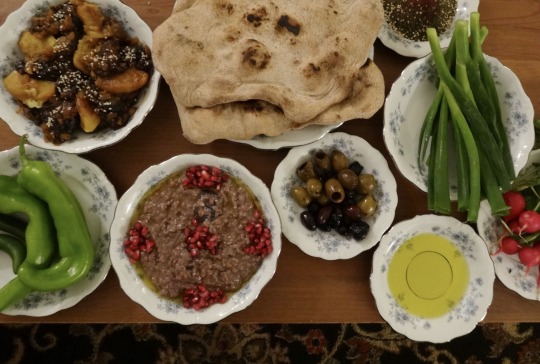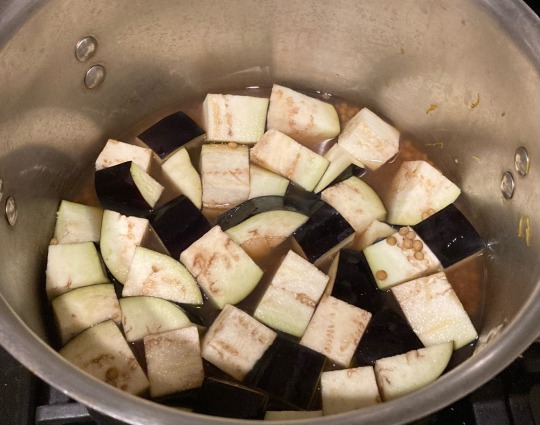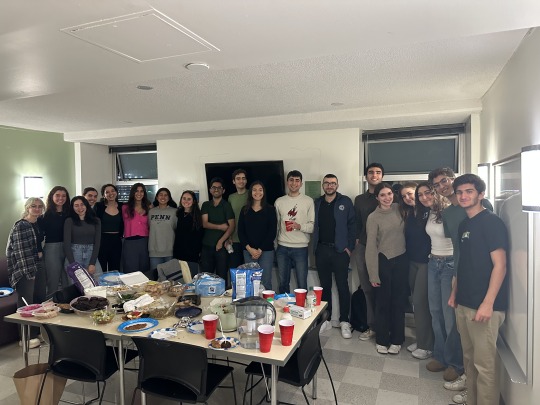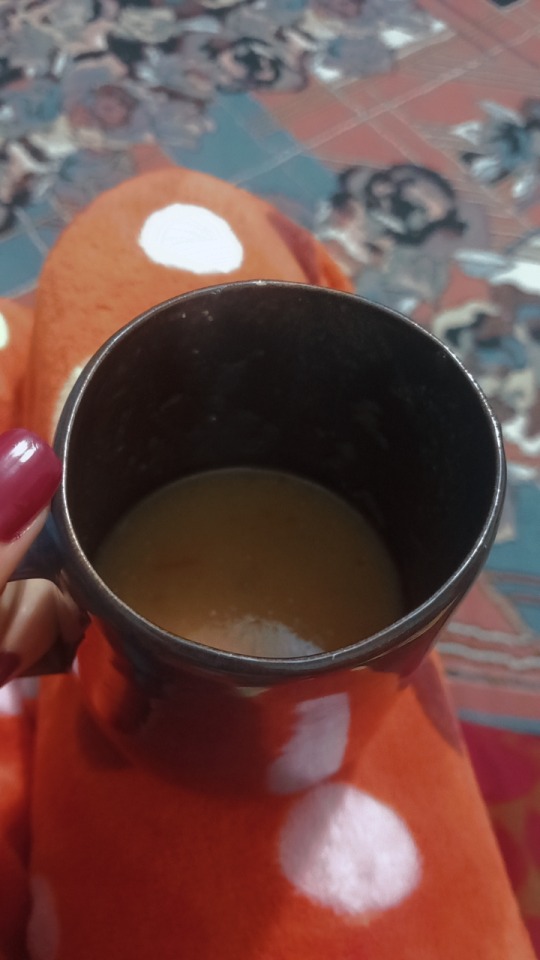#عدس
Text
مجدرة العدس
0 notes
Text
youtube
زراعة العدس من البذور
#عدس#العدس#plants#agriculture#زراعة#نبات#flowers#outdoors#شجرة#بذور#cultivation#نباتات الزينة#nature#seeds#اشجار#trees#تربة#gardening#planting#cactus#garden#youtube#lens
0 notes
Text
youtube
1 note
·
View note
Text
لبنان.. من «أبو عدس» إلى علي هاشم ! - أخبار السعودية
لبنان.. من «أبو عدس» إلى علي هاشم ! – أخبار السعودية
عندما خرج «أبو عدس» في فيلم مصور العام 2005 معلناً مسؤوليته ومسؤولية جماعة النصرة والجهاد في بلاد الشام عن تفجير موكب رفيق الحريري رأس الوزارة اللبنانية وأعلى سلطة تنفيذية فيها، لم يتوقع أحد أن يعيد حزب الله إنتاج نفس السيناريو بعد 17 عاماً مع «علي هاشم» السعودي الهارب إلى أحضان الحزب ويحوله إلى «أبو عدس 2».
حزب الله يؤكد مرة تلو المرة أنه مجرد آلة للقتل، لنتذكر أنه اغتال العديد من السياسيين…
View On WordPress
1 note
·
View note
Link
0 notes
Text


[ID: A purplish-grey stew topped with olive oil and garnished with piles of pomegranate seeds. Plates of green peppers, bitter olives, olive oil, taboon bread, green onions, radishes, and za'tar surround the dish. The second image is a close-up of the same stew. End ID]
رمانية / Rummāniyya (Palestinian pomegranate stew)
Rummaniyya (رُمَّانِيَّة; also transliterated "rumaniyya," "rummaniya," and "rummaniyeh") is a Palestinian stew or dip made from lentils, eggplant, and pomegranate seeds, flavored with nutty red tahina and a zesty, spicy دُقَّة (dugga) of dill seeds, garlic, and peppers. A طشة (ṭsha), or tempering, of olive oil and onion or garlic is sometimes added.
"Rummaniyya," roughly "pomegranate-y," comes from رُمَّان ("rummān") "pomegranate," plus the abstract noun suffix ـِيَّة ("iyya"); the dish is also known as حبّة رُمَّانَة ("ḥabbat rommāna"), or "pomegranate seeds." It is a seasonal dish that is made at the end of summer and the beginning of fall, when pomegranates are still green, unripe, and sour.
This stew is considered to be one of the most iconic, historic, and beloved of Palestinian dishes by people from Gaza, Yaffa, and Al-Ludd. Pomegranates—their seeds, their juice, and a thick syrup made from reducing the juice down—are integral to Palestinian cuisine and heritage, and images of them abound on ceramics and textiles. Pomegranates and their juice are sold from street carts and cafes in the West Bank and Gaza.
Today, tens of thousands of tons of pomegranates are grown and harvested by Israeli farmers on stolen Palestinian farmland; about half of the crop is exported, mainly to Europe. Meanwhile, Palestinians have a far easier time gaining permits to work on Israeli-owned farms than getting permission from the military to work land that is ostensibly theirs. These restrictions apply within several kilometers of Israel's claimed borders with Gaza and the West Bank, some of the most fertile land in the area; Palestinian farmers working in this zone risk being injured or killed by military fire.
Israel further restricts Palestinians' ability to work their farms and export crops by imposing tariffs, unexpectedly closing borders, shutting down and contaminating water supplies, spraying Palestinian crops with pesticides, bulldozing crops (including eggplant) when they are ready to be harvested, and bombing Palestinian farmland and generators. Though Palestinian goods have local markets, the sale of Palestinian crops to Israel was forbidden from 2007 to 2014 (when Israel accepted shipments of goods including tomato and eggplant).
Gazans have resisted these methods by disregarding orders to avoid the arable land near Israel's claimed borders, continuing to forage native plants, growing new spices and herbs for export, planting hydroponic rooftop gardens, crushing chalk and dried eggplants to produce calcium for plants, using fish excrement as fertilizer, creating water purification systems, and growing plants in saltwater. Resisting Israeli targeting of Palestinian food self-sufficiency has been necessary for practical and economic reasons, but also symbolizes the endurance of Palestinian culture, history, and identity.
Support Palestinian resistance by calling Elbit System's (Israel's primary weapons manufacturer) landlord; donating to Palestine Action's bail fund; and buying an e-Sim for distribution in Gaza.
Serves 6-8.
Ingredients:
For the stew:
1 medium eggplant (370g)
1 cup brown lentils (عدس اسود)
600g pomegranate seeds (to make 3 cups juice)
3 Tbsp all-purpose flour
1/4 cup red tahina
1/2 cup olive oil
Salt, to taste
Citric acid (ملح الليمون / حامِض ليمون) (optional)
Red tahina may be approximated with home cooking tools with the above-linked recipe; you may also toast white tahina in a skillet with a little olive oil, stirring often, until it becomes deeply golden brown.
For the دُقَّة (dugga / crushed condiment):
2 tsp cumin seeds, or ground cumin
1 1/2 Tbsp dill seeds ("locust eye" بذور الشبت / عين جرادة)
5 cloves garlic
1 green sweet pepper (فلفل بارد اخضر)
2 dried red chilis (فلفل شطة احمر)
People use red and green sweet and chili peppers in whatever combination they have on hand for this recipe; e.g. red and green chilis, just green chilis, just red chilis, or just green sweet peppers. Green sweet peppers and red chilis are the most common combination.
For the طشة (Tsha / tempering) (optional):
Olive oil
1 Tbsp minced garlic
Instructions:
1. Rinse and pick over lentils. In a large pot, simmer lentils, covered, in enough water to cover for about 8 minutes, or until half-tender.
2. Meanwhile, make the dugga by combining all ingredients in a mortar and pestle or food processor, and grinding until a coarse mixture forms.

Dugga and components.
3. Cube eggplant. A medium-sized eggplant may be cut in half lengthwise (through the root), each half cut into thirds lengthwise, then cubed widthwise.


Cubed eggplant, red tahina, and pomegranate seeds.
4. Add eggplant to simmering water (there is no need to stir).

5. While the eggplant cooks, blend pomegranate seeds in a blender very thoroughly. Strain to remove any gritty residue. Whisk flour into pomegranate juice.

Pomegranate juice being strained.
6. Taste your pomegranate juice. If it is not sour, add a pinch of citric acid or a splash of lemon juice and stir.
7. Add dagga to the pot with the lentils and eggplant and stir. Continue to simmer until the eggplant is very tender and falling apart.
8. Add pomegranate juice, tahina, and olive oil to the pot, and simmer for another 5 minutes, or until stew is very thick and homogenous.

Bright pink pomegranate juice in stockpot.
9. (Optional) In a small skillet, heat a little olive oil on medium. Fry minced garlic, stirring constantly, until golden brown. Add into the pot and stir.
10. (Optional) Mash the stew with the bowl of a ladle or a bean masher to produce a more homogenous texture.
Serve rummaniyya hot or cold in individual serving bowls. It may be served as an appetizer, or as a main dish alongside flatbread, olives, and fresh vegetables such as radishes, green peppers, green onions, carrots, and romaine lettuce. It may be eaten with a spoon, or by using كماج (kmāj), a flatbread with an internal pocket, to scoop up each bite.
559 notes
·
View notes
Text
شوربة العدس بالخضار
0 notes
Text
Persian-Armenian Potluck
Earlier this October, I helped organize a cultural crossover event between the Persian and Armenian student societies here at UPenn. The event was a potluck where each attendee could bring a dish from their respective culture. It was held on campus, in one of the dormitory lounge spaces. I personally prepared سلاد شیرازی, a salad consisting of diced cucumbers, tomatoes, onions, and herbs, served with olive oil and vinegar as a dressing. This is my favorite salad and a particularly popular one in the Middle East. Some of the Persian dishes and delicacies which made appearances were: تهدیگ, گز ، and عدس پلو. The Armenian dishes included baklava, Armenian bread, and Lamajun— flatbread topped with minced meat and herbs. I was interested to see the overlap between the Persian and Armenian culinary traditions and broader cultures. Like with Persian cuisine, a lot of Armenian food centered around flatbread and meat dishes. There were also many specific foods that were shared between both cultures, including dolmeh and doogh. Some students were of Armenian/Iranian descent, being ethnically Armenian but having family who grew up in Iran. This definitely challenged my perceptions of Iran being relatively culturally homogeneous. I was able to see how there are many different ethnolinguistic groups comprising the vibrant population of the country. One thing I particularly enjoyed about the experience was that I was be able to practice my Farsi skills, especially with my friends from Iran. I also enjoyed the feeling of nostalgia imparted by the familiar tastes and smells of home.
دانيال

23 notes
·
View notes
Text
في هذا الطقس البارد لا أُريد معطف أريد عناقِك او شوربة عدس 😌
17 notes
·
View notes
Text
وانا ومروحه العربيه اتملت ومكانش في غيري من بره قامت بنت مسيحيه لطيفه جدا قالتلي تعالي هنا ووسعتلي وقعدتني جمبها بدل ما تستني عربيه تاني "حقيقي ممتنه يعني" بعد ما رجعت لقيت امي عامله عدس اصفر ع الغدا انا بحبه عادي بس مكانش ليا نفس ليه، حسيته مش مناسب كده وكنت حرانه، مش ده المهم خالص المهم انها قالتلي انها عامله محشي ع العشا وهنا بالظبط عرفت ان النهارده يومي، وتفاصيل كتير صغيره تاني وحسيت ان مفيش غيري ع الكوكب النهارده 😂❤️❤️
16 notes
·
View notes
